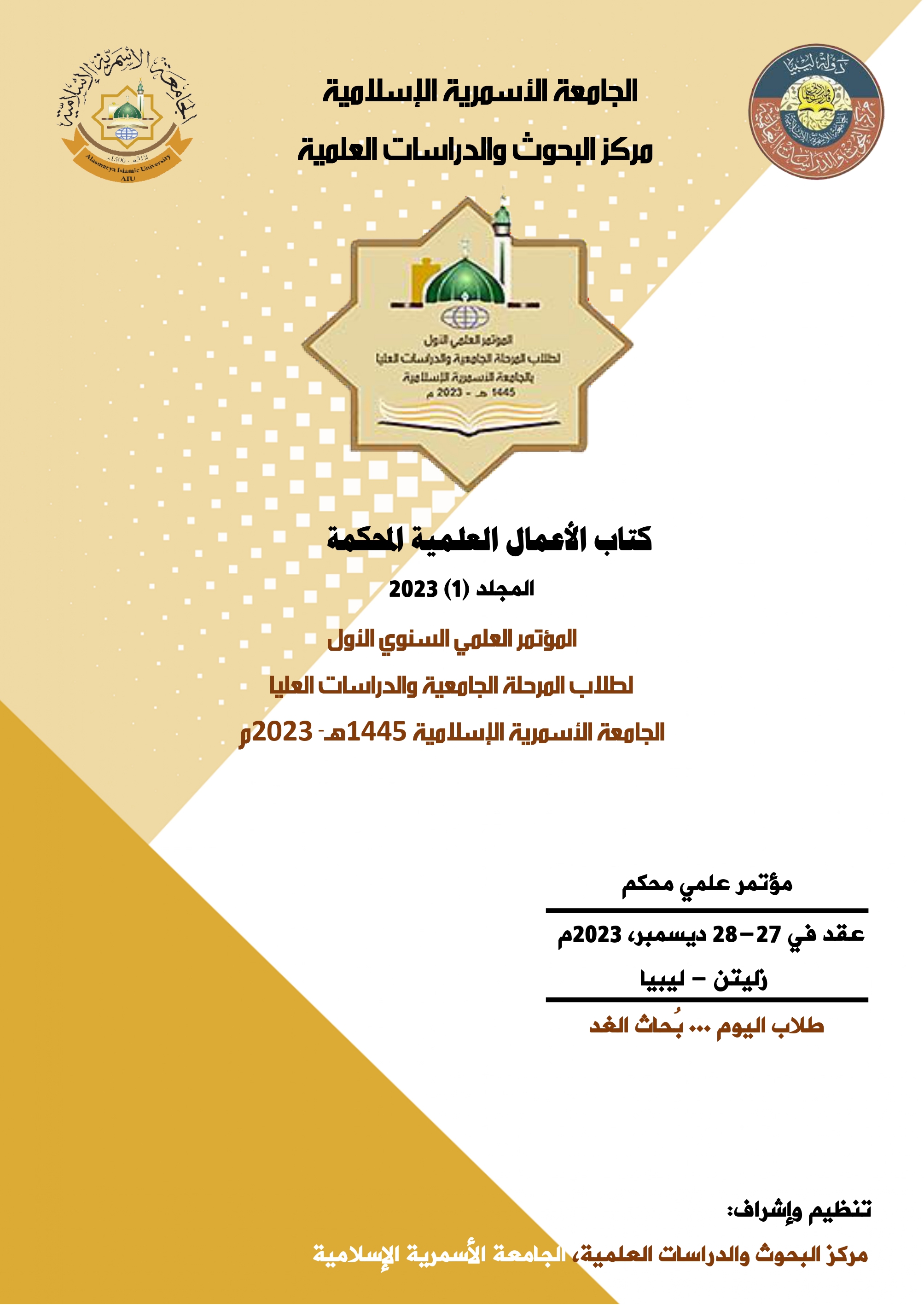مقارنة الأداء لهوائيات دائرية شريطية باستخدام ثلاثة ركائز مختلفة عند الأمواج فوق المليمترية لأنظمة الجيل الخامس
الكلمات المفتاحية:
الثابت الكهربائي للعازل، الجيل الخامس 5G، هوائي دائري الشكل، مؤشرات أداء الهوائيالملخص
في هذه الدراسة، يتم تقديم تصميم وتحليل ثلاثة هوائيات دائرية للأمواج فوق المليمترية المُغذّاة من الداخل باستخدام خامات قاعدة مختلفة تتميز بثوابت كهربائية فريدة، وهي Polycarbonate وPreperm 260 LDS وRogers RT-5880، لمقارنة أدائها. تستخدم التصاميم المقترحة مادة النحاس لتشكيل الهوائي الإشعاعي على الجانب العلوي من قاعدة العازل الكهربائي وأرضية على الجانب السفلي من نفس قاعدة العازل الكهربائي. تتردد هذه الهياكل عند تردد 28 غيغاهرتز، وقد تم حساب أبعاد الهوائيات الثلاثة بناءً على الخامات الثلاثة المختلفة للقاعدة. تمت محاكاة أداء الهياكل الثلاثة المقترحة باستخدام برنامج تكنولوجيا المحاكاة الحاسوبية (CST) لمقارنة أدائها. تم استخدام معايير الأداء التالية لتقييم ومقارنة أداء التصاميم المقترحة: فقدان العودة، والكسب، وكفاءة الإشعاع، والعرض الترددي، ونمط الإشعاع، ومعامل الجهد الموجي الواقف. توفر التركيبات المقترحة فقدان إرجاع (S11) أقل من -10 ديسيبل، وكان VSWR قريب جدًا من القيمة المثالية، والتي تقل عن اثنين للتطبيقات اللاسلكية العملية. علاوة على ذلك، أظهر Preperm 260 LDs نتائج أفضل من حيث S11و VSWR، مع قيم -61.038 ديسيبل و 1.0017، على التوالي. من حيث الكسب، يزداد عند استخدام المواد ذات ثابت عزل منخفض.
التنزيلات
المراجع
Almazok, S. (2022). Performance Analysis of mm-Wave Inset-Fed Rectangular Patch Antenna Employing Polyimide Substrate for 5G System. Tobruk University Journal of Engineering Sciences (TUJES ), 4(1).
Almazok, S., Mami, A., and Aldrewy, S. (2023). Performance Comparison of 28 GHz Rectangular Patch Antenna Based on Three Different Dielectric Constant Substrates for 5G Communications. The International Journal of Engineering & Information Technology (IJEIT).11(1).
Altufaili, M. M. S. I., Najaf, A. N., & Idan, Z. H. (2022). Design of circular-shaped microstrip patch antenna for 5G applications. TELKOMNIKA Telecommunication Computing Electronics and Control, 20(1), 19.
Colaco, J., & Lohani, R. B. (2020). Design and implementation of Microstrip Circular patch antenna for 5G applications. 2020 International Conference on Electrical, Communication, and Computer Engineering (ICECCE).
CST Studio Suite [Computer software]. (2019). Retrieved from http:// www.cst.com.
Darboe, O., Konditi, D. B. O., & Manene, F. (2019). A 28 GHz rectangular microstrip patch antenna for 5G applications. International Journal of Engineering Research and Technology, 12(6).
Faisal, M. M. A., Nabil, M., & Kamruzzaman, M. (2018, October). Design and simulation of a single element high gain microstrip patch antenna for 5G wireless communication. In 2018 International Conference on Innovations in Science, Engineering and Technology (ICISET), 290-293).
Fishyxl. (2006, May 24). what’s the difference between Gain and Realized gain in HFSS [Online forum post]. Forum for Electronics.
Gemeda, M. T., Fante, K. A., Goshu, H. L., & Goshu, A. L. (2021). Design and Analysis of a 28 GHz Microstrip Patch Antenna for 5G Communication Systems. International Research Journal of Engineering and Technology (IRJET), 8(2).
Huque, T. I. U., Chowdhury, M. A., Hosain, M. K., & Alam, S. J. (2011). Performance analysis of Corporate Feed rectangular patch element and circular patch element 4x2 microstrip array antennas. International Journal of Advanced Computer Science and Applications, 2(7).
Kaeib, A. F., Shebani, N. M., & Zarek, A. R. (2019). Design and Analysis of a Slotted Microstrip Antenna for 5G Communication Networks at 28 GHz. 2019 19th International Conference on Sciences and Techniques of Automatic Control and Computer Engineering (STA).
Kaur, A., Dhillon, A. S., & Sidhu, E. (2016, March). Performance analysis of microstrip patch antenna employing Acrylic, Teflon and Polycarbonate as low dielectric constant substrate materials. In 2016 International Conference on Wireless Communications, Signal Processing and Networking (WiSPNET), 2090-2093).
Kumar, S., & Kumar, A. (2019). Design of circular patch antennas for 5G applications. 2nd International Conference on Innovations in Electronics, Signal Processing and Communication (IESC), Shillong, India.
Kumar, G. (2019). Millimeter Wave Circular Microstrip Patch Antenna for 5G Applications. International Journal of Research and Scientific Innovation (IJRSI) |, VI.
Kumar, & Verma (2017). Design Analysis of Different Types of Feed to Microstrip Patch Antenna. IRE Journals, 1(6), 7–11.
Matin, & Sayeed. (2010). A Design Rule for Inset-fed Rectangular Microstrip Patch Antenna. WSEAS TRANSACTIONS on COMMUNICATIONS, 9(1), 63–72.
Mohammed, A. S., Yauri, A. R., & Kabir, A. M. (2019). Review of feeding techniques for microstrip patch antenna. International Journal of Computer Applications, 178(27), 97-887.
Mukta, C., Rahman, M., & Islam, A. Z. M. T. (2021). Design of a Compact Circular Microstrip Patch Antenna for WLAN Applications. International Journal on AdHoc Networking Systems, 11(03), 01–11.
Ngoc, T. T. B. (2020). Design of Microstrip Patch Antenna for 5G Wireless Communication Applications. Journal of Science Technology and Food, 20(2).
Prachi, N., Gupta, V., & Vijay, S. (2020). A novel design of compact 28 GHz printed wideband antenna for 5G applications. International Journal of Innovative Technology and Exploring Engineering, 9(3), 3696–3700.
Przesmycki, R., Bugaj, M., & Nowosielski, L. (2020). Broadband Microstrip Antenna for 5G Wireless Systems Operating at 28 GHz. Electronics, 10(1), 1.
Rahma, Na, & Mynuddin. (2020). Performance Analysis of an Inset-Fed Circular Microstrip Patch Antenna Using Different Substrates by Varying Notch Width for Wireless Communication. International Journal of Electromagnetics and Applications, 10(1).
Rahmawati, Y. N., & Ludiyati, H. (2021, November). The characteristic of a 3.5 GHz circular patch antenna using open-ring artificial dielectric. In 2nd International Seminar of Science and Applied Technology (ISSAT 2021) , 387-393).
Sahoo, A. B., Patnaik, N., Ravi, A., Smarak Behera, & Biswa Binayak Mangaraj. (2020). Design of a Miniaturized Circular Microstrip Patch Antenna for 5G Applications.
Samad, M., & Rahman, M. (2021). Design and comparative performance analysis of a circular microstrip patch antenna with different modifications. 2021 3rd International Conference on Sustainable Technologies for Industry 4.0 (STI).
Why there is a big difference in between realize gain and gain in my design? | ResearchGate. (2018, November 23). Retrieved from https://www.researchgate.net/post/Why-there-is-a-big-difference-in-between-realize-gain-and-gain-in-my-design.
التنزيلات
منشور
إصدار
القسم
الرخصة
الحقوق الفكرية (c) 2023 سراج الدين ميلاد الدريوي، سالم عبد الله المزعوق، علي عمر مامي

هذا العمل مرخص بموجب Creative Commons Attribution 4.0 International License.





